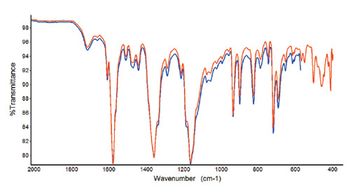
Application Notebook
Experimental data show the crystal dimensions of an ATR-FT-IR sampling accessory influence the usable spectral range. An expanded range germanium crystal is introduced for the measurement of high refractive index samples.

Application Notebook
Experimental data show the crystal dimensions of an ATR-FT-IR sampling accessory influence the usable spectral range. An expanded range germanium crystal is introduced for the measurement of high refractive index samples.
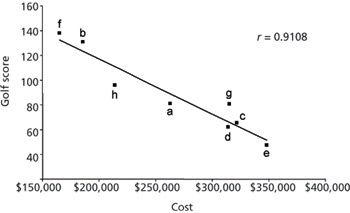
Application Notebook
Spectroscopy is planning to publish the next issue of The Application Notebook in December. As always, the publication will include paid position vendor application notes that describe techniques and applications of all forms of spectroscopy that are of immediate interest to users in industry, academia, and government. If your company is interested in participating in this special supplement, contact:
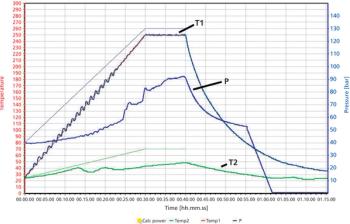
Application Notebook
Single reaction chamber (SRC) microwave digestion offers multiple benefits over traditional dry ashing for the sample preparation of heavy crude oils for trace metals analysis. These include increased sample throughput, reduced risk of contamination, more complete digestion and retention of volatile analytes.
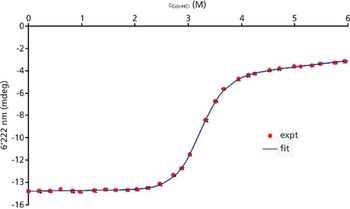
Application Notebook
Quantifying protein stability is of fundamental importance in many areas of biomolecular research. The thermodynamic stability of a protein is reflected by a change in Gibbs free energy, ?G?, characterizing the equilibrium transition from a folded state, to an ensemble of unfolded, denatured states. In order to study ?G?, the folding equilibrium needs to be shifted towards the unfolded states which can be achieved by several different methods including the addition of chemical denaturants such as guanidinium chloride (GdnHCl).
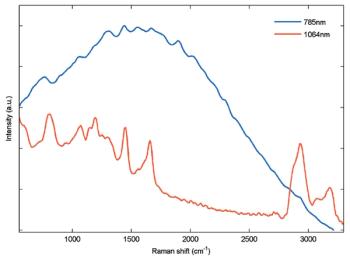
Application Notebook
Biological tissues and other materials often autofluoresce at near-infrared wavelengths, prohibiting Raman acquisition. New, dispersive Raman systems at 1064 nm allow fluorescence-free measurement in similar integration times.
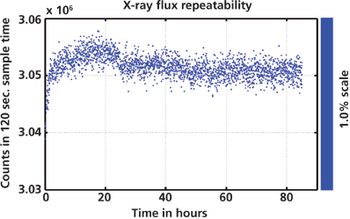
Application Notebook
Moxtek's ULTRA-LITE X-ray source is a very small self contained X-ray source (X-ray tube and high voltage power supply) for use in portable X-ray applications, such as the handheld X-ray florescence (XRF) spectrometers. This note demonstrates that this X-ray source has a stable and repeatable X-ray flux output over time, which is vital for the precision of the calibrated XRF measurements.
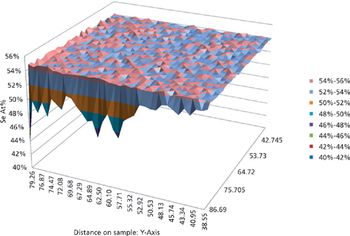
Application Notebook
Building on more than 10 years of Micro-XRF experience, the Orbis spectrometer yields a system with excellent Micro-XRF capability while setting a new standard in analytical flexibility. The Orbis incorporates a unique motorized turret integrating video and X-ray optics allowing coaxial sample view and X-ray analysis. The turret can accommodate two additional collimators along with the X-ray optic for a total of three X-ray beam sizes to expand the Orbis analytical capabilities beyond traditional Micro-XRF analysis.
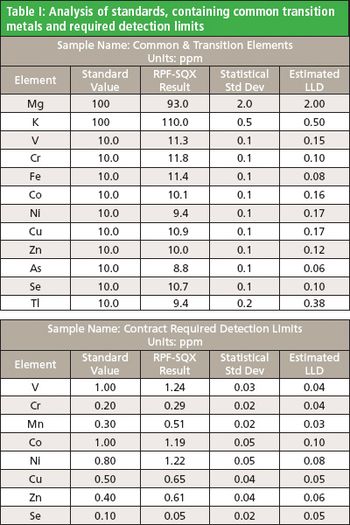
Application Notebook
Elemental analysis of aqueous solutions into the low ppm and sub-ppm concentration ranges is demonstrated, using the advanced Cartesian geometry Rigaku NEX CG Energy Dispersive X-ray Fluorescence (EDXRF) spectrometer in conjunction with the patented UltraCarry? sample preparation technique.
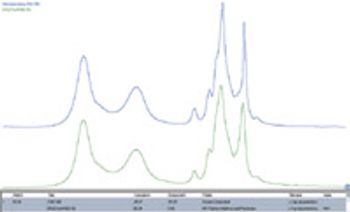
Application Notebook
Identifying contaminants in materials is a common troubleshooting need for which FT-IR spectroscopy is ideally suited. Thermo Scientific OMNIC Specta software provides a unique and powerful tool to assist the analyst to quickly identify unexpected constituents. The OMNIC? Specta? Contaminant Search feature allows for rapid investigations that can save time and minimize the impact of product issues.

Application Notebook
Hydrophilic interaction liquid chromatography (HILIC) and reversed-phase high performance liquid chromatography (HPLC) are complementary techniques in the separation of organic molecules with a broad band of polarity. Both separation variants can be operated easily with volatile and water-miscible solvents (for example, ammonium acetate aqueous solution and acetonitrile). Thus, a hyphenation of both liquid chromatographic techniques with atmospheric pressure ionization (API) and mass spectrometry (MS) seems to be a consequent step.
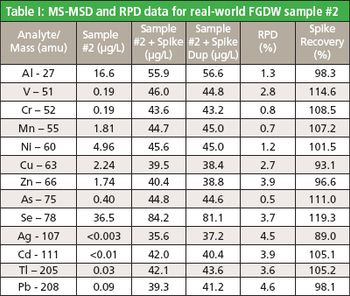
Application Notebook
The US EPA wrote wastewater effluent limit guidelines for discharge permits granted to coal-fired power plants back in 1982, known as 40 CFR Part 423. However, the rule has not kept pace with changes in the industry over the past several decades. For that reason, the US EPA has revised the rule with new proposed revisions expected in November 2012 and the final rule expected by April 2014. To support the modification to this rule, the US EPA is developing a new ICP-MS method specifically for flue gas desulfurization wastewaters (FGDW).
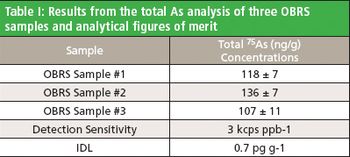
Application Notebook
This paper demonstrates an ICP-MS method for the determination of total and As species concentrations in organic brown rice samples (OBRS).
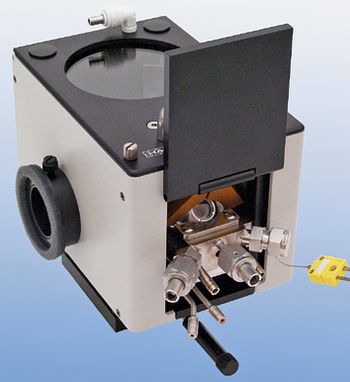
Application Notebook
Clays, like kaolinite and smectite, are hygroscopic and it is well known that the adsorbed water can be driven off at elevated temperatures. At very low temperatures, in addition to the typical band narrowing and shifting, changes in the O-H bond vibrational modes of clays have also been observed.
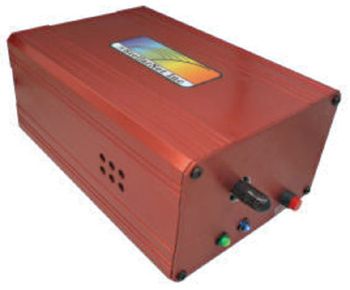
Application Notebook
Near-infrared spectroscopy (NIR) is a powerful technique for rapid and non-destructive material analysis. Scientific breakthroughs over the past several decades have made NIR one of the most powerful tools for research, especially in industries such as food and drug, chemical, oil and gas, and plastics. This technique has mainly been limited to non-portable applications due to instrument size, fragility, and cost. Additionally, Database Search Software or Multivariate Prediction Software must also be employed to extract results; however, user-friendly and cost effective solutions have not been widely available.
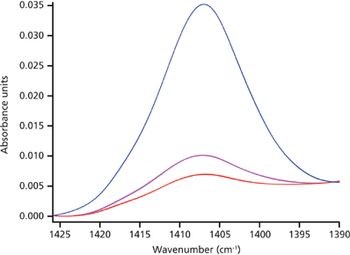
Application Notebook
Modern paints and varnishes are complex mixtures and the organization of the material properties is an important task. One of the most essential variables is the curing which should in most cases take place in a reasonably short time span that can range from a fraction of a second to many days. It is difficult to evaluate the degree of curing and its completeness by visual inspection.
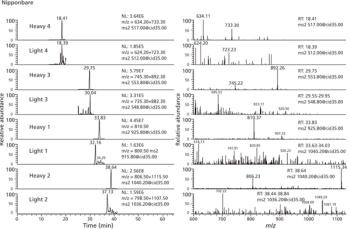
Application Notebook
Crop development to improve yield or disease resistance has been explored for centuries and the technologies to measure these improvements have subsequently become complex. The use of transgenes in crop plants is a more technically advanced approach than traditional breeding and the success of this approach is best assessed using modern techniques that accurately quantify the desired traits. Here, we applied targeted liquid chromatography–mass spectrometry (LC–MS) using synthetic stable isotope–labeled peptides to identify and quantify the relative levels of transgenic to native protein.
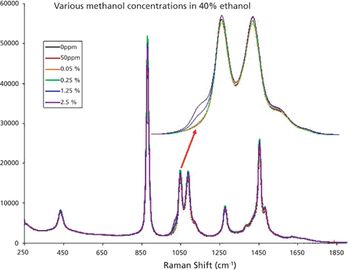
Application Notebook
Low concentration natural methanol exists in most alcoholic beverages and usually causes no immediate health threat. Nevertheless, it is possible to have natural occurring methanol in beverages with concentration as high as 18 g/L of ethanol; or equivalent to 0.72% methanol in 40% ethanol, in alcohol (1). Current EU regulation limits naturally occurring methanol to below 10 g/L of ethanol; or equivalent to 0.4% methanol in 40% ethanol.
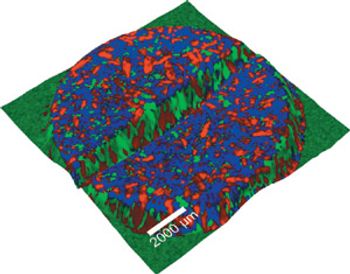
Application Notebook
Knowledge about the morphology and chemical composition of heterogeneous materials on a submicrometer scale is crucial for the development of new material properties for highly specified drug delivery systems. WITec's ultrasensitive and modular alpha300 and alpha500 microscope series allow for the analysis of the chemical characteristics of a sample three-dimensionally, underneath and at the surface. Confocal Raman microscopy for 3D chemical imaging and TrueSurface Microscopy employed for topographic Raman imaging deliver the highest spectral quality and unmatched spatial resolution.
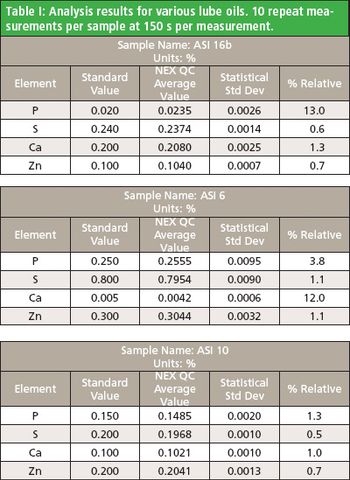
Application Notebook
The measurement of P, S, Ca, and Zn in lube oil is demonstrated as per ASTM D6481-99(2010).

Application Notebook
Click the title above to open the Spectroscopy September 2012 Application Notebook, Vol 27 No 9, in an interactive PDF format.